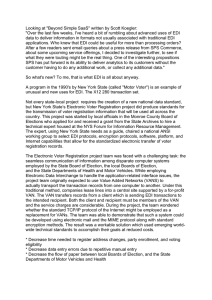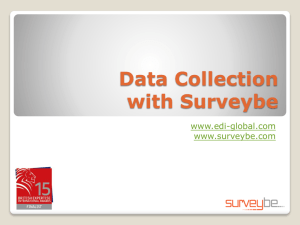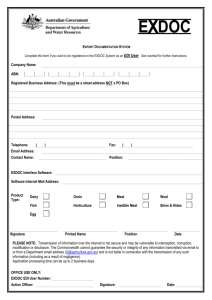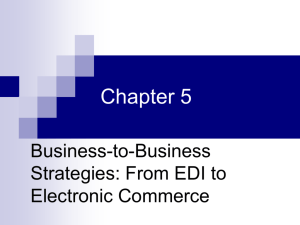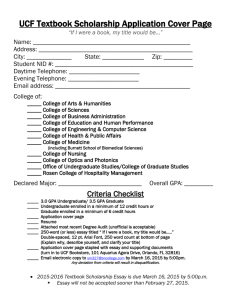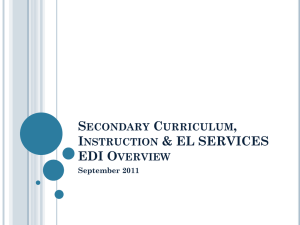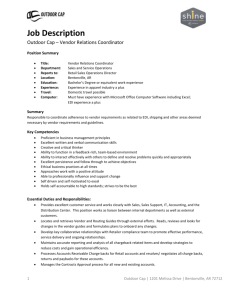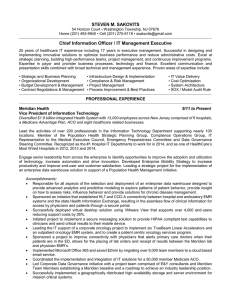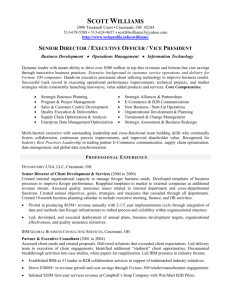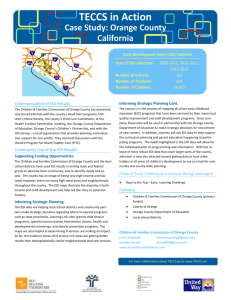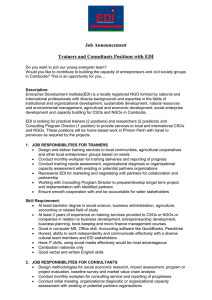E-Commerce, 7e
advertisement
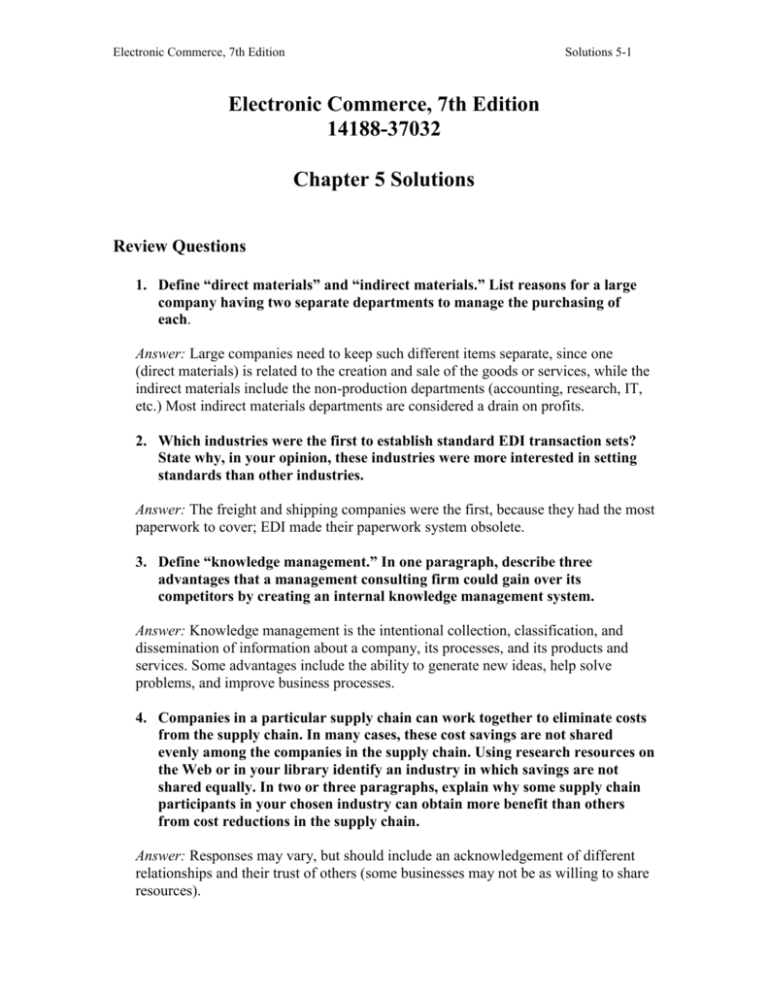
Electronic Commerce, 7th Edition Solutions 5-1 Electronic Commerce, 7th Edition 14188-37032 Chapter 5 Solutions Review Questions 1. Define “direct materials” and “indirect materials.” List reasons for a large company having two separate departments to manage the purchasing of each. Answer: Large companies need to keep such different items separate, since one (direct materials) is related to the creation and sale of the goods or services, while the indirect materials include the non-production departments (accounting, research, IT, etc.) Most indirect materials departments are considered a drain on profits. 2. Which industries were the first to establish standard EDI transaction sets? State why, in your opinion, these industries were more interested in setting standards than other industries. Answer: The freight and shipping companies were the first, because they had the most paperwork to cover; EDI made their paperwork system obsolete. 3. Define “knowledge management.” In one paragraph, describe three advantages that a management consulting firm could gain over its competitors by creating an internal knowledge management system. Answer: Knowledge management is the intentional collection, classification, and dissemination of information about a company, its processes, and its products and services. Some advantages include the ability to generate new ideas, help solve problems, and improve business processes. 4. Companies in a particular supply chain can work together to eliminate costs from the supply chain. In many cases, these cost savings are not shared evenly among the companies in the supply chain. Using research resources on the Web or in your library identify an industry in which savings are not shared equally. In two or three paragraphs, explain why some supply chain participants in your chosen industry can obtain more benefit than others from cost reductions in the supply chain. Answer: Responses may vary, but should include an acknowledgement of different relationships and their trust of others (some businesses may not be as willing to share resources). Electronic Commerce, 7th Edition Solutions 5-2 5. In about 300 words, describe the reasons a buyer might have for wanting to participate in an industry consortium marketplace instead of setting up its own private company marketplace. Answer: Responses may vary, but should include a discussion of the power that a collection of companies can exert (as opposed to a single company) over vendor prices and goods. Exercises 1. Use the Thomas Register of American Manufacturers Web site (note: free registration is required to access this site) to locate an industrial product with which you are completely unfamiliar. Note how many companies offer that product, have catalogs or Web sites, offer on-line ordering, and offer literature by fax. Summarize that you learn about the product and its availability on the Web in a report of approximately 400 words. Answer: Answers will vary, but should include the product itself (such as beads, tools, and other jewelry making items from BeadBox), as well as the different ordering features and the literature selections. 2. You work for Andrew Wheeler, who is the president of Fabro-Max, a small plastic parts fabricator. He wants you to look into improving customer interactions through Internet EDI. You know that a number of companies that provide VAN services for companies engaging in EDI, such as Descartes VAN Services, EC/EDI, GPAS, IBM Global Services, and Kleinschmidt, also offer Internet EDI services. Some of these VAN operators are targeting smaller businesses that, in the past, would not have been able to afford to implement EDI. Choose two VAN providers from this list, or that you find on the Web, and examine their Web sites. For the two VAN providers that you choose, determine whether they are offering Internet EDI services. Also decide whether, in your opinion, their Web sites are targeting smaller businesses such as Andrew’s. In a memo to Andrew of approximately 150 words, summarize your findings for the two VAN providers you chose. Answer: Answers will vary, but should consider the following: the student should examine any businesses that are listed with those VAN’s; for example, IBM’s site has feature stories on companies as well as a fact sheet and services portfolios that the student should examine. 3. A number of standard-setting organizations offer memberships to business firms. You are working for Grace Henry, chief information officer (CIO) of Flex-Electric, a medium-size company that manufactures components for electronic medical and laboratory instruments. Grace asks you to investigate Electronic Commerce, 7th Edition Solutions 5-3 the benefits of joining an industry standard-setting organization, RosettaNet. Prepare a memo to Grace in which you outline the purposes of the organization and the costs and benefits of becoming a member. Close your memo with a recommendation regarding whether your company should join the organization. Answer: Responses will vary, but students should provide details about the services offered to members as well as the costs of joining. The student should list the pros and cons of each organization. Do they have regular meetings, support, Web support, and other items? Examine the costs and see if they are comparable to the benefits. Cases Case 1: Harley-Davidson 1. Answers will vary, but should reflect the relative strengths and weaknesses of the two technologies in supply chain management. Answers should also include cost-benefit considerations of completely replacing supply chain management systems both within Harley-Davidson and at their hundreds of suppliers. 2. Answers will vary, but should contain an annotated timetable reflecting considerations for RFID adoption based on assumptions about the Harley-Davidson supply chain. RFID should be adopted first in those stages that would benefit most from its advantages over bar codes and scanners. Harley-Davidson may also consider initially implementing RFID in those stages of the supply chain that would not require other companies to overhaul their tracking systems. Case 2: American Packaging Machinery 1. Answers should include a diagram similar to Figure 5-7 implementing EDI and EFT into the APM payroll system as described in the case scenario. 2. Answers may vary, but some possible issues that could arise in implementing EDI and EFT into the APM payroll system include: training staff to use new equipment or software properly, compatibility with systems already in place at involved banks, the union, relevant government agencies, and the insurance company, updating the system to properly handle changes in tax code or union contracts, and insuring security of the sensitive financial data transmitted. 3. Answers may vary, but examples of elements of the new system that may best be implemented by outside companies include: creating the time tracking software that will be installed on the technician's handheld computers, installing any new software onto supervisor, Payroll Department, and Accounting Department computers and training relevant staff in the proper procedures for new systems.
